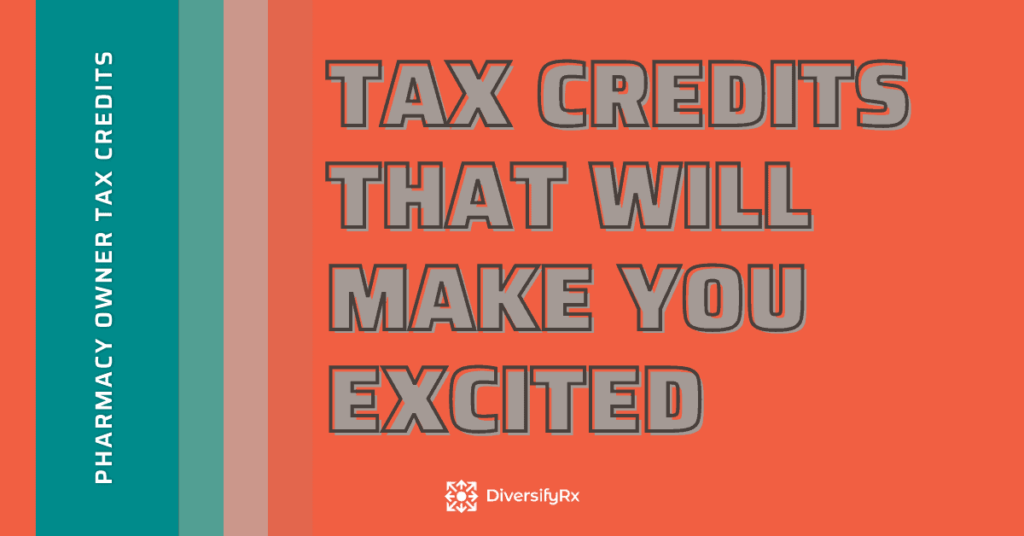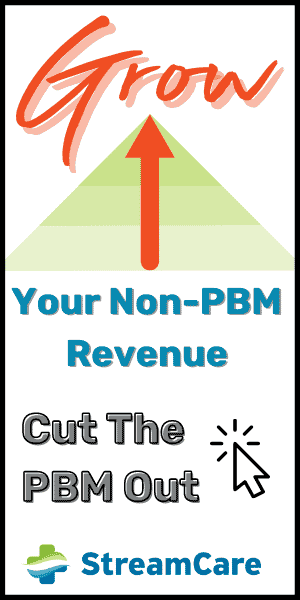Ensure you know about these tax credits that many pharmacy owners have missed out on that are worth thousands.
It’s that time of year again! No, not spring, tax time. As a pharmacy owner, you probably rely on a tax or accounting firm to file your annual taxes. You may be thinking, “Why should I learn about tax credits? Isn’t that my accountant’s job?”. Well… yes, it is, AND I prefer to be as knowledgeable as possible to stand up for my interests. Accountants are human and may miss a little-used tax credit that could cost you thousands in extra tax bills. For some general tax tips, read this blog.
Past Success With Tax Credits
Many years ago, I learned from Tom Wheelwright about the manufacturing tax credit. I was able to take advantage of this as a compounding pharmacy. My tax accountant was able to go back 3 years and amend my previous tax returns. This nugget of knowledge was worth tens of thousands of dollars to me. I know of other pharmacy owners that got back over $300,000 in taxes!
Two Tax Credits That You Need To Know
There are two tax credits that most pharmacies should take advantage of, but most don’t. That is because these aren’t common tax credits, especially for small pharmacy owners. However, just because they aren’t common doesn’t mean you should go on paying thousands more in taxes. It’s disclaimer time. I am not a tax accountant, and before you submit for any of these credits, you should speak with your preferred tax expert to ensure that your pharmacy qualifies.
1. R&D Tax Credit
The IRS created in 1981 what is commonly referred to as the R&D tax credit to stimulate research and development (R&D) in the United States. The R&D tax credit is a dollar-for-dollar offset of federal income tax liability and, in certain circumstances, payroll tax liability. Most states provide a similar credit, making the average potential benefit of the federal and state credit in the range of 10-20% of qualified spending. The credit’s statutory, IRC Section 41 name is Credit for Increasing Research Activities. This way, you can direct your accountant to the correct area of the tax code.
The R&D tax credit equals the sum of amounts calculated using two different kinds of expenses: (1) qualified research expenses (QREs) and (2) basic research payments (BRPs).
Qualified Research Expenses (QREs)
QREs must explicitly be for specific commercial objectives. QREs don’t have to be for original investigations to advance scientific knowledge; they can be derivative or duplicative investigations. Furthermore, QREs don’t have to be for scientific knowledge advancement; they can be for a product, process, and software development or improvement. QREs will be the more likely credit you as a pharmacy owner will be taking on your taxes.
Basic Research Payments (BRPs)
BRPs have more stringent criteria that need to be met. Expenses for BRPs must relate to an original investigation, scientific knowledge advancement, and finally, not have a specific commercial objective. The ratio of QRE tax credits when compared to BRP tax credits is 1,000 to 1. Most R&D tax credits are QREs.
For more information and a list of common FAQs on QRE tax credits, head over to BDO.com for a detailed article.
2. Disabled Access Tax Credit
Through the IRS Code Section 44, Disabled Access Tax Credit, your pharmacy can qualify for a tax credit for increasing website accessibility and making other accommodations to make your pharmacy more usable to persons with disabilities. The policy states “small businesses may take an annual tax credit for making their businesses accessible to persons with disabilities,” should, in most cases, cover the efforts you make to comply with Section 508 of the Rehabilitation Act of 1973, as amended (29 U.S.C. § 794 (d)).
You may have heard of the recent lawsuits brought against pharmacies for not having ADA-compliant websites. Being involved in one of these lawsuits is costly in time and money. Between the fines and legal fees, trust me, you do not want to be involved. Make sure your website and physical space all comply with federal, state, and local disability rules. Becoming compliant will cost money. Fortunately, this tax credit can offset some of these expenses.
Tax Credit Worth Up To $5,000
The disabled access tax credit is an annual tax credit with a maximum credit value of $5,000. This tax credit is not a dollar-for-dollar credit; it works out to about a 50% offset. Speak with your tax advisors to better understand which of your pharmacy’s expenses may qualify for this tax credit. Most certainly, bringing your website up to standard is allowed. Pharmacy owners can claim this tax credit using the Disabled Access Credit on IRS Form 8826.
Enjoy tax time just a little more by ensuring you are maximizing each of these tax credits for your pharmacy. Discuss how these may apply to your pharmacy with your tax professional. For more tips on preparing for the tax season, read 6 Tax Tips For 2021. Be sure to join our private Facebook Group and follow us on LinkedIn.


















